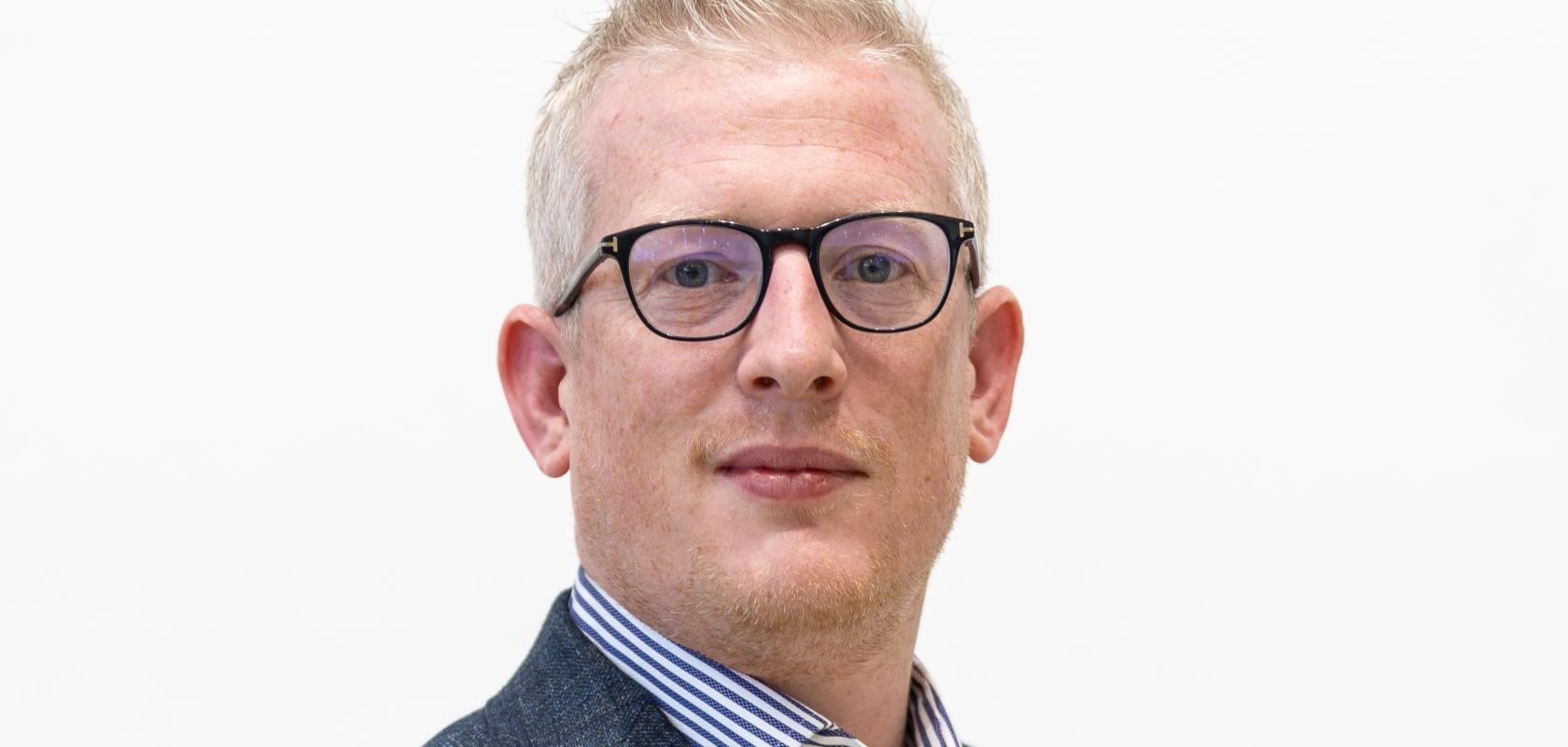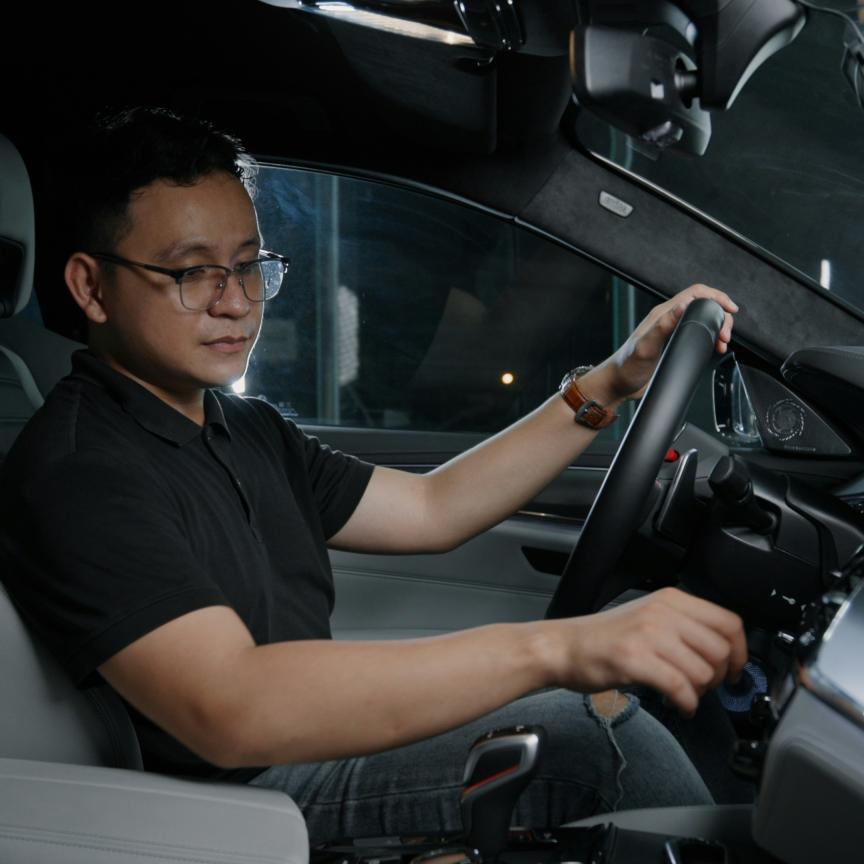‘The difference between academic research and making a product is like night and day,’ Robert Maher, CTO at Infinera and a 2024 Photonics100 honoree, told Lidia Briquets, Programme Manager at EPIC, when speaking about his journey from academia to working for a global manufacturer of optical compound semiconductors, high-end subcomponents, and network infrastructure systems for telecommunications networks.
What’s the background to your appointment as CTO at Infinera?
In 2005, after completing a BSc in Electronic Engineering at Dublin City University, I started a PhD also at Dublin City University, which focused on optical pulse generation and tuneable and fast switching lasers.
After my PhD, I spent 18 months as a postdoc researcher and, in 2010, I was awarded a three-year Marie-Curie scholarship to work on coherent optical networking at University College London. This was a huge move for me because, at that time, the optical industry was changing from conventional transmission techniques to coherent transmission – that is, using all three properties of light: phase, amplitude and polarisation, to encode information rather than just light intensity as with standard methods. This was a massive inflection point in my field and in our industry because coherent transmission enabled greater flexibility in line rates, greater scalability and increased data throughput at a lower cost-per-bit.
I continued at UCL as a Research Fellow until 2016, when I was awarded a University Research Fellowship from the Royal Society, which provided me with a great opportunity to establish a long academic career at UCL. But, having spent an enjoyable 11 years in academia, I decided the time was right to branch out into industry.
Accordingly, in 2016, I became a staff engineer at Infinera, a manufacturer of optical transmission equipment, based in San Jose, California. Over the next seven years, I worked my way up the company and, in 2022, I was appointed Infinera’s CTO.
What were your main challenges in the transition from staff engineer to CTO?
When I started, I focused on mainly deep engineering problems such as trying to make sure a laser or a calibration algorithm was working correctly. I then worked on prototype pieces of equipment like Indium phosphide PICs, advanced packaging technologies and digital signal processing ASICs.
As I moved up the ladder, I was helped enormously by Infinera’s collective, one-team mentality culture, which gave me confidence and unbelievable access to the CEO and senior executives who always found time to discuss any issues or problems I had. As a Principal Engineer, I had a little more exposure to customers, and I started to do bigger things such as field trials of new equipment with customers and having a greater oversight of the product.
As Senior Principal Engineer, I became responsible for more people and I started to move towards the role of CTO – where, instead of fighting the day-to-day challenges, I had to look at future opportunities and what technology we should build to remain competitive in five years’ time.
I now lead a team of 70, which has not been particularly problematic as I’ve always been comfortable in a leadership position, and I have a lot of people I can ask for advice.
How did you find the transition from academia to industry?
The difference between academic research and making a product is like night and day. Making a product reliable and robust so it works every single time 15 years straight is very different to making an experiment work in the lab for 15 minutes or writing a paper – it requires a different mindset with a different level of detail and an increased level of engineering scrutiny.
How has the company developed?
Infinera was founded in 2000 and was the first company to develop large-scale, monolithic photonic integrated circuits based on indium phosphide. Since then, the company has achieved unbelievable integration because we’ve been able to pack thousands of optical elements and functions into a single PIC, which has brought down costs and increased performance. A major differentiation of our PIC technology is the ability to manufacture at scale and with high yield. The company successfully built on top of the PIC technology by innovating in digital and analogue ASIC development, with successful ASIC tape outs ranging from the 130nm CMOS node 20 years ago to the 3nm CMOS today. These two core technology building blocks are the foundation of Infinera’s optical networking products.
Initially, we were very California-centric but, over the past 12 years, we’ve become a global company with a significant presence in Canada, Sweden, Germany, India and Portugal, and we now have a workforce of more than 3,000.
What are your main products?
Infinera makes differentiated optical networking solutions – full end-to-end optical networks from the end points; i.e., the transceivers to the line systems and the software that controls the whole network. In terms of size and functionality, the technology has evolved a lot and our latest transceiver innovation are coherent pluggables, where we can miniaturise the technology such that it fits in a pluggable that can go directly into a router.
Who are your main customers?
I’d say 30% of our business today is direct with the hyperscalers (i.e., large-scale data centres that offer massive computing resources) and another 20% is indirect – where a company will install a network for a hyperscaler using our equipment. The other 50% is with the conventional telecom companies around the world who buy our optical transmission interfaces, line systems in between, together with multiple software offerings.
What differences are there between the US, Europe and Asian markets?
At the business level, there are some regional differences in terms of how you interact and how you coordinate or make business deals. But at a technology level, things are more or less constant. Certain technological features may be more focused in one area, but it is important to design products that can address a broad part of the market, which can then be supplemented with any specific requirements or requests.
How do you see the future for your market?
I think the hyperscalers are going to continue to have a big influence on the product roadmaps of companies such as Infinera because they drive so much volume. Then we have Nvidia and the massive volume that AI is generating and consuming inside data centres.
Intra-data centre networks still use a conventional type of transmission technology but, within the near future, may start to consider coherent technology too, specifically to address campus and large link budget applications. This will be an opportunity for companies such as Infinera to really drive huge volume in the coherent space. Fortunately, we have our own indium phosphide fab in the USA, so we have the capacity and the know-how to keep pace with the growing demand for high-speed interfaces inside the data centres.
If you started again, what would you do differently?
At each stage of my career, I’ve been incredibly lucky, so I don’t think I’d change anything. I received a great education at Dublin City University, both during my undergraduate degree and my PhD. Getting a Marie-Curie Fellowship was a real turning point because it enabled me to move abroad and join an amazing group at UCL, and the knowledge and experience I gained there in the coherent transmission space enabled me to successfully apply for a job at Infinera. I’ve also been lucky working for Infinera because its open, flat structure and empowering management system has enabled me to progress my career in the way I have.
What’s your advice for the next generation of CTOs?
Firstly, don’t run before you can walk. Don’t put too much pressure on yourself to come out of a PhD and become a senior engineer or CTO type of contributor. Instead, be calm, take your time to really understand what you’re doing, become an expert in something and grow from there.
Secondly, make sure you enjoy your work and be prepared to work hard. You may be a genius, but without a good work ethic someone else will just go straight past you.
Thirdly, study optical communications because you’ll have a wonderfully interesting and rewarding job at the end of your academic career. Academic research is crucial for the optical communications industry. So, I hope young people don’t get swayed into headline grabbing fields such as AI and machine learning, because we need the next generation of optical engineers to come through and drive the future of ubiquitous global communications


